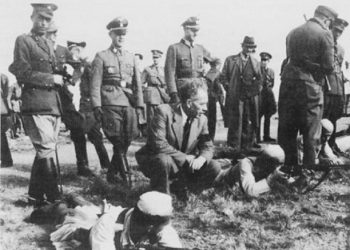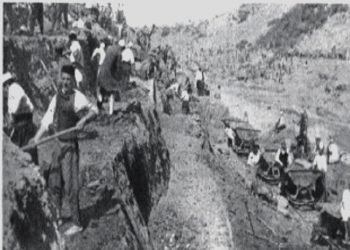By Ahmet Bushati
Part Two
Memorie.al/ After the flag was altered in 1944 with the addition of the communist star, Shkodra transformed into a center of resistance against the regime, paying a high price for its tradition of freedom. By April 1945, high school students, already feeling betrayed by the promises of the war, gathered to oppose the new terror that imprisoned and killed innocent people. Communism turned Kosovo into a province of Yugoslavia, while Shkodra was punished for its “historical crime”- its defiance against invaders. The “Postriba Movement” became a tool to suppress all dissent, plunging the city into an unprecedented spiral of suffering: imprisonments, executions, and the destruction of families. The high school students, alongside citizens, became symbols of resistance, while some “young communists” turned into tools of the State Security, leading to expulsions, imprisonments, and internments.
Four times, Shkodra rose in armed rebellion, but history forgot these battles. This book is written to remember the countless prisoners, the tortured, the killed, and the parents who suffered in silence. It is a warning against dictatorship and a plea for future generations not to forget the sacrifices made for freedom.
Continued from the previous issue
In the Footsteps of a Diary
Shkodra in the Early Years Under Communism
PART ONE
A BIOGRAPHICAL GLIMPSE OF MY GENERATION
Where did I first witness the greatness of my homeland?
I saw the greatness of my homeland when my first- grade teacher, Ahmet Çaku, taught us to sing the “Hymn to the Flag” alongside our first alphabet lessons, often accompanying us with his violin. My peers and I would later rediscover this greatness in patriotic poems and songs, carefully taught to us by dedicated teachers and patriots of the time, who were shaped by the traditions of the Renaissance figures that came before them.
As we advanced from grade to grade, they spoke to us of the Illyrians, Skanderbeg and his wars for freedom, Ismail Qemali raising the national flag in Vlora, and the martyrs who fell defending our lands. These stories built scenes of battles and victories in our imaginations, silently binding us to the promise that, when grown, we would answer our homeland’s call- just as those heroes had.
We witnessed this greatness again during national holidays, dressed in “red and black” costumes, marching with our school’s shining flag-bearing procession to the Municipality, where crowds and other schools gathered. The grand flags waved from the balconies of the Prefecture and City Hall, as well as from shop fronts. Fiery speeches praised Albania, and the city band’s stirring marches electrified the festive atmosphere. At night, the city center glittered with lights, and fireworks burst in the dark sky above us.
We also saw this greatness every morning before classes, when students and teachers, led by our respected principal Et’hem Osmani, stood in formation before the flag and solemnly sang the “Hymn to the Flag,” followed by King Zog I’s anthem-a moment of deep reverence for our homeland and king.
Thus, school on one side and family on the other- raising us with strict traditions- nurtured in us the sentiments that shaped our character. So when Fascist Italy invaded Albania, even as children, we felt the weight of that occupation. And as time passed, we too would fight for our country’s freedom in our own way, just as the older generation, educated years before us, devoted their energy and moral courage to the struggle.
What did I witness on the eve of Fascist Italy’s invasion of Albania?
On the eve of Italy’s invasion, high school students, led by the nationalist professor Alush Leshanaku, gathered for days in front of the Prefecture, demanding weapons to fight the impending aggressor. Though we were still young, we felt not only fear and sorrow but also pain.
One afternoon, just before the invasion, as groups of young men and children gathered in our neighborhood of Perash, a massive flock of crows suddenly appeared, swirling ominously over the rooftops. The strange sight drew everyone’s attention, and one man, watching their chaotic movements, broke the silence with a grim prophecy: “These crows foretell war.”
Two days later, on a sunny morning – likely April 5, 1939 – eighteen foreign aircraft flew demonstratively over our city, dropping leaflets justifying Italy’s invasion as a “liberation from Ahmet Zog’s tyranny,” a naive and irresponsible claim signed by a group of Albanian exiles in Grenoble, France. Another man in the crowd shouted, “These planes are aid from Yugoslavia!” – a lie we children believed, cheering as we ran through the streets chanting, “Aid has come from Yugoslavia!”
I rushed home, hoping the “good news” would revive my ailing grandmother, who had left her will-the sylyz – to my father the night before. But when I burst in shouting, “Grandma, aid has come from Yugoslavia!” she only muttered her usual curse: “May the evil take you!”
The next morning, as we played outside, the relentless roar of machine guns erupted from the hills. “The Italians tried to cross the Bahçalleku Bridge but met our army’s resistance,” my cousin announced. By afternoon, the gunfire faded, and defeated Albanian soldiers began retreating to their barracks. Some, shamed, stripped off their uniforms in secret.
Later, we approached a group of exhausted soldiers resting by the road. A young athlete in white, Nazim Osmani, joined them, asking about the battle. Suddenly, he snatched a rifle and sprinted down the street, shouting, “Who is a man today… or ever?!”
By sunset, a mob rushed to loot the barracks. We followed but scattered when an officer fired warning shots. The next day, we heard of the 300 Postriba fighters resisting near Bërdica, the killing of an Italian officer at the bridge, and other sporadic acts of defiance-more gestures of patriotism than organized warfare.
Our Resistance Against the Occupiers
The next morning, we watched Italian “Bersaglieri” troops- elite soldiers on motorcycles, their helmets adorned with black plumes – parade through our neighborhood. The crowd watched in silent fury.
Two years later, as high school students, we began resisting in our own ways. Individually or in groups, we defied orders from the Italian principal, Aldo Onetti. Some refused the fascist salute, others boycotted the singing of fascist hymns, and we skipped mandatory “Fascist Afternoons” in the Balilla youth organization.
Fascist Italy militarized students: Balilla for younger boys, Avanguardisti for middle grades, and Giovani Fascisti for older ones. Even girls in the “Donika Kastrioti” Normal School wore black uniforms with white hoods.
After a term of boycotts, we were given disciplinary marks and warned of expulsion. Our parents were summoned, and reluctantly, we complied—partially. We attended the events but left behind the black shirts or hoods, symbols of fascism. The Italian officers, though strict, tolerated our small rebellions.
At home, our parents spoke openly against Italy. My father was interned there; my cousins Xhemal and Galip Juka had already joined the war. They condemned Italy and Germany’s invasions but praised Finland’s resistance against Soviet Russia. Sometimes, sarcastically, they admitted, “But Mussolini is right- he’s keeping us fed with cornbread,” hinting at the economic changes under occupation./Memorie.al




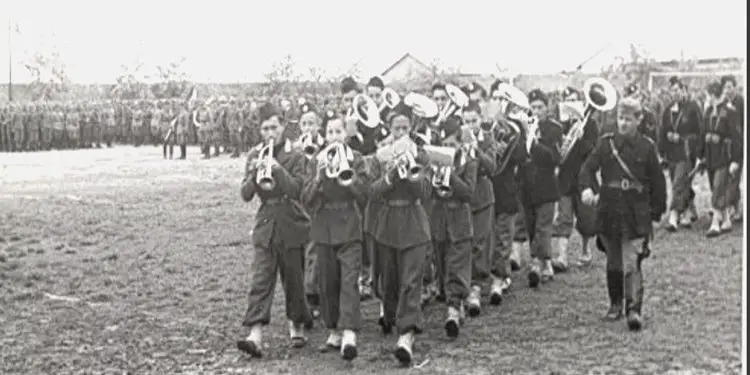
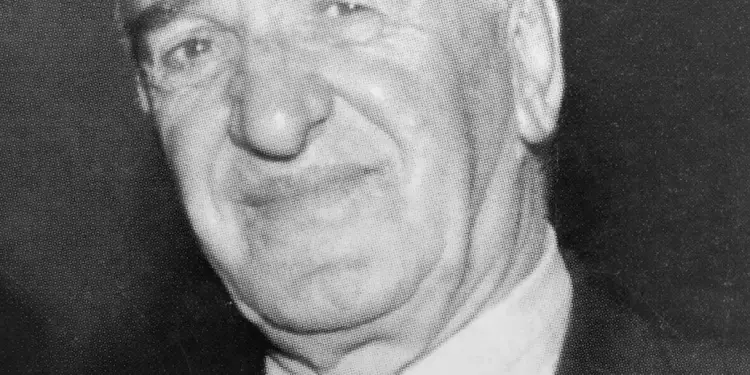
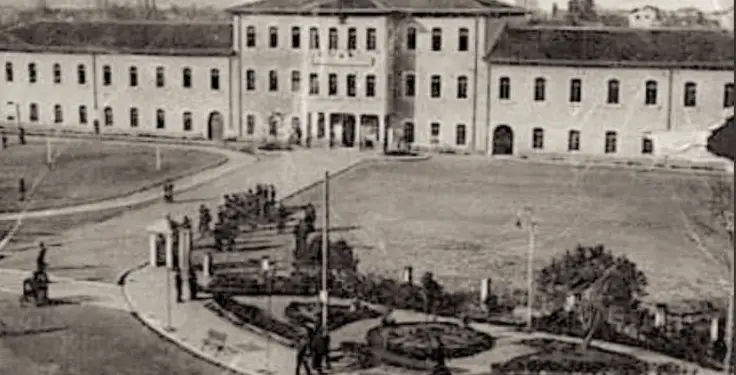
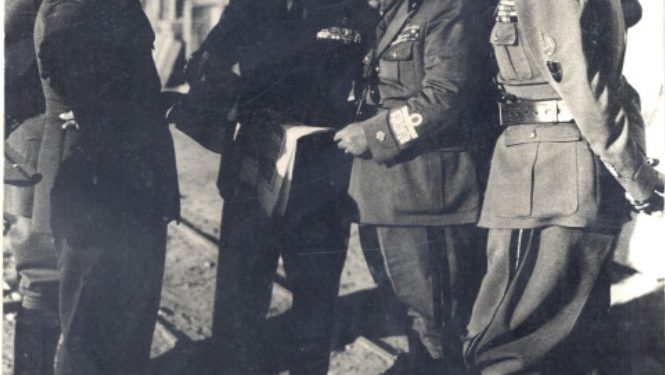
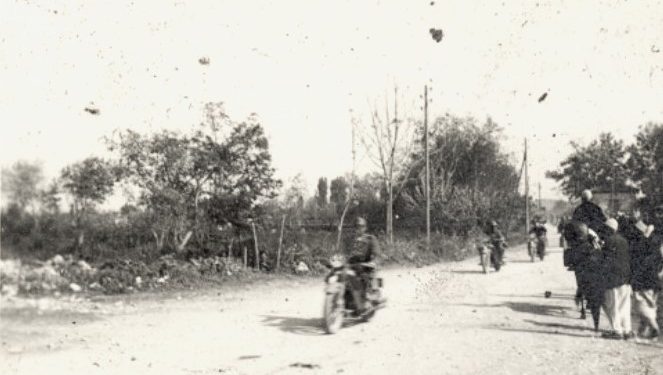
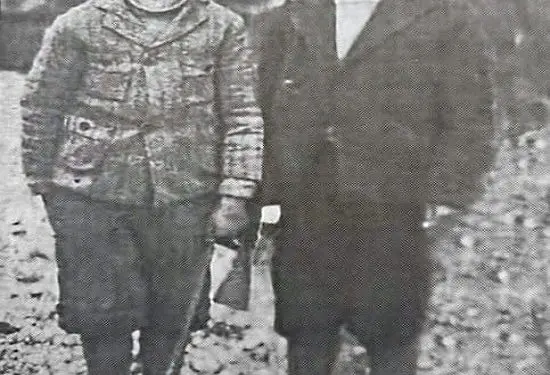
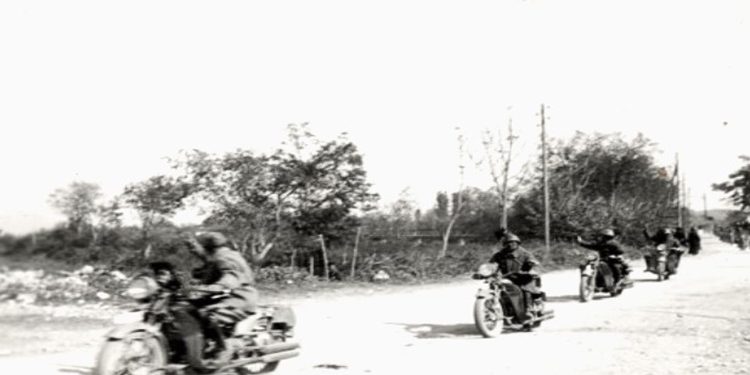
![“His capacity is quite low, he is not clear about the political situation, he only has two grades of school and has never held a book in his hand…”/The State Security document on Sulo Gradeci, Enver [Hoxha]’s escort, is revealed](https://memorie.al/wp-content/uploads/2025/11/Me-Sulo-Gradecin-ne-Dajt-350x250.jpg)

